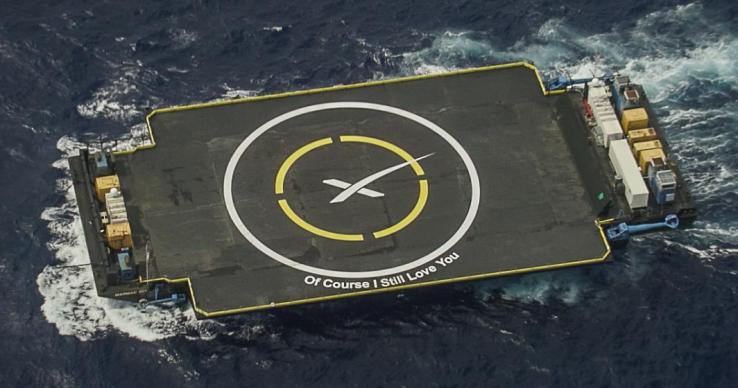
Today at 6:35pm EST, SpaceX successfully launched the SES-9 communications satellite into Geostationary orbit (GEO).
Launching the SES-9 payload was the primary goal of today’s mission, but many had their eyes back on the ground for what would have been the first successful landing of a rocket on a drone ship in the ocean. Unfortunately, however, the rocket landing was unsuccessful.
SpaceX had repeatedly set expectations low for this particular rocket recovery attempt.
Characteristics of today’s mission made rocket recovery more difficult for a couple different reasons. First, the speed of this particular rocket was considerably faster than previous landing attempts.
Second, the landing attempt was made on a floating drone ship at sea rather than on a stable platform on land, which is how SpaceX’s first successful rocket recovery was completed.
Rocket speed was greater because the mission required SpaceX to send its payload into GEO, which is about 100 times higher than Low Earth Orbit (LEO) where other SpaceX payloads have been placed.
SpaceX’s last rocket recovery attempt, made in January, was on a mission that sent a satellite into LEO and therefore required a lower speed. That landing was alsounsuccessful, but the rocket did soft land on its target and only fell over because one of the rocket’s support legs failed to lock upon touchdown.

SpaceX landing attempt after Jason-3 mission in January / Courtesy of SpaceX
Drone ship rocket landings are also inherently more difficult than land-based recovery attempts, but for certain missions – like the one today – that’s the only option.
As seen in the video above, the live stream of the drone ship landing cut out just as the rocket appeared in the video.
SpaceX has experienced challenges with their drone ship video connection in the past as well. The video feed requires a constant satellite connection and because the drone ship is constantly moving that connection is hard to maintain. As the rocket comes in for landing, it can shake the drone ship, making it even harder to maintain this connection.
Two earlier launch attempts on February 24th and 25th were scrubbed because of concerns with SpaceX’s super-chilled liquid oxygen propellant.
A third launch attempt on February 28th was delayed due to safety reasons because a boat strayed within range of the launch site. If anything were to happen to the SpaceX vehicle after launch while the rocket was over the water, it could potentially be extremely dangerous to boats within a specified range.
After the boat had moved and it was safe to launch, SpaceX began launch procedures, but aborted in the final seconds of countdown because of a low thrust sensor alarm.
A fourth launch was scheduled for March 1st, but upper winds were too high to launch.
With SES-9 safely placed in GEO, the fifth time was a charm and today’s mission by all accounts was a success. According to Musk, SpaceX’s next mission will have a better chance for a rocket recovery.

Comments
Post a Comment